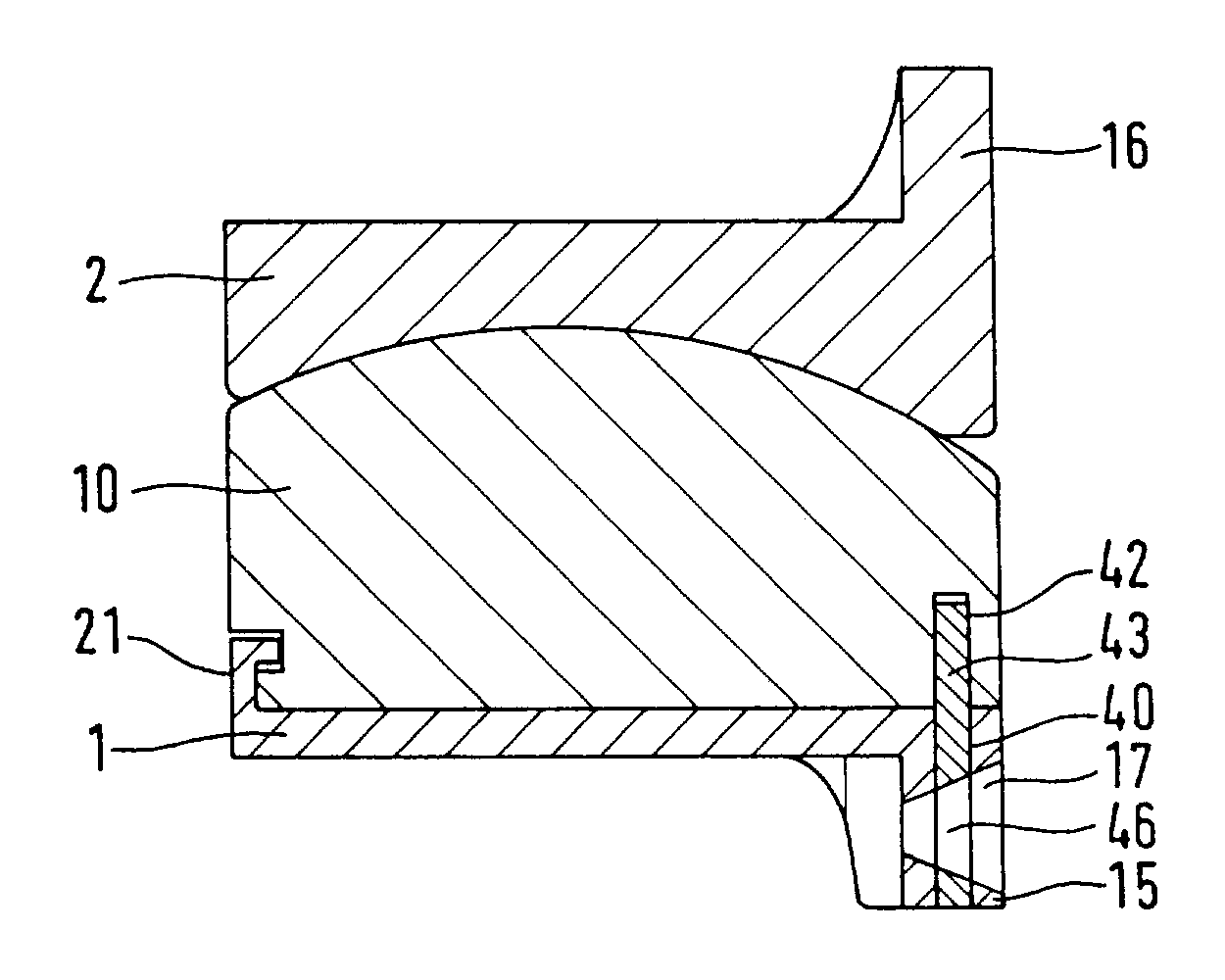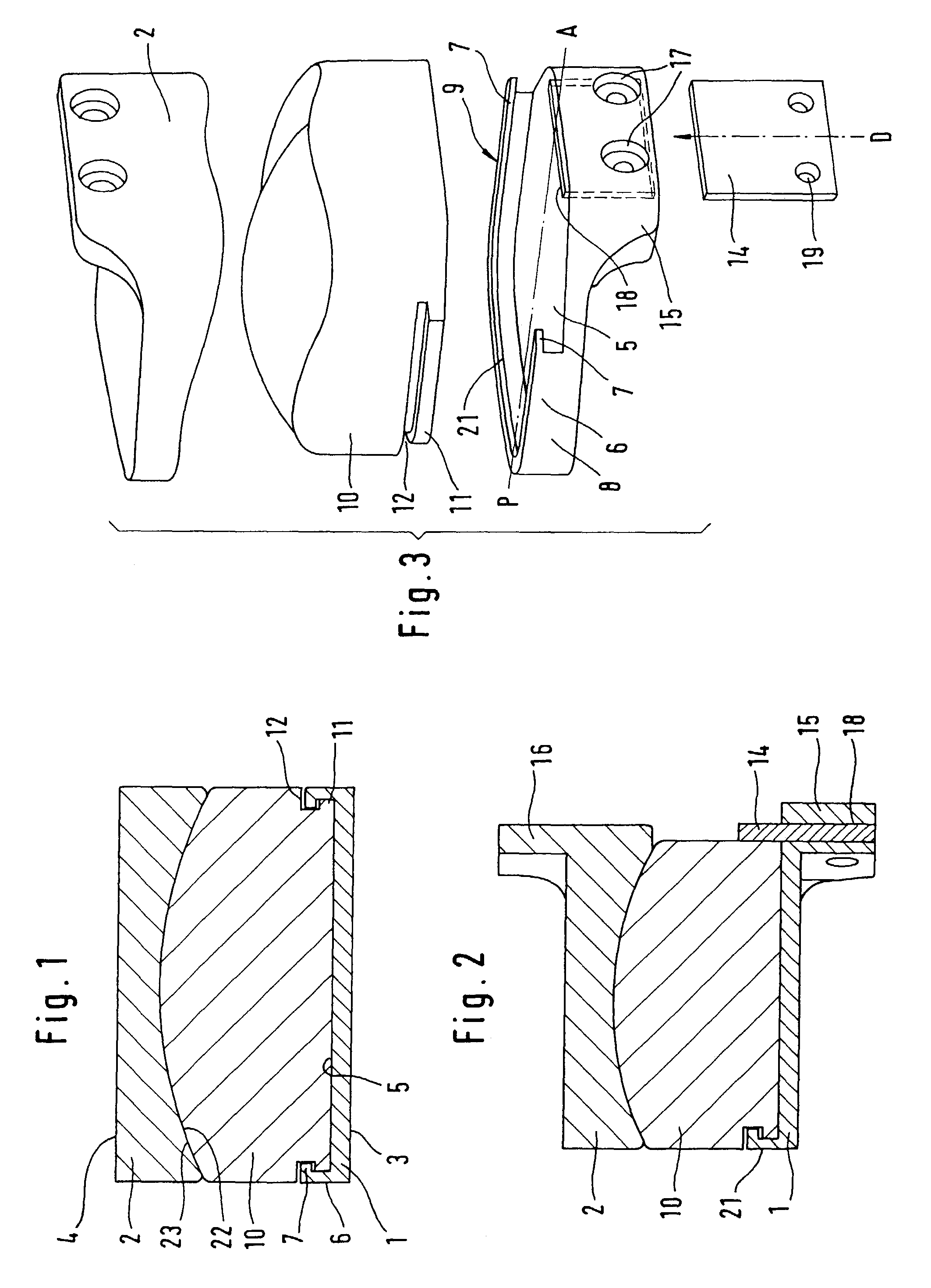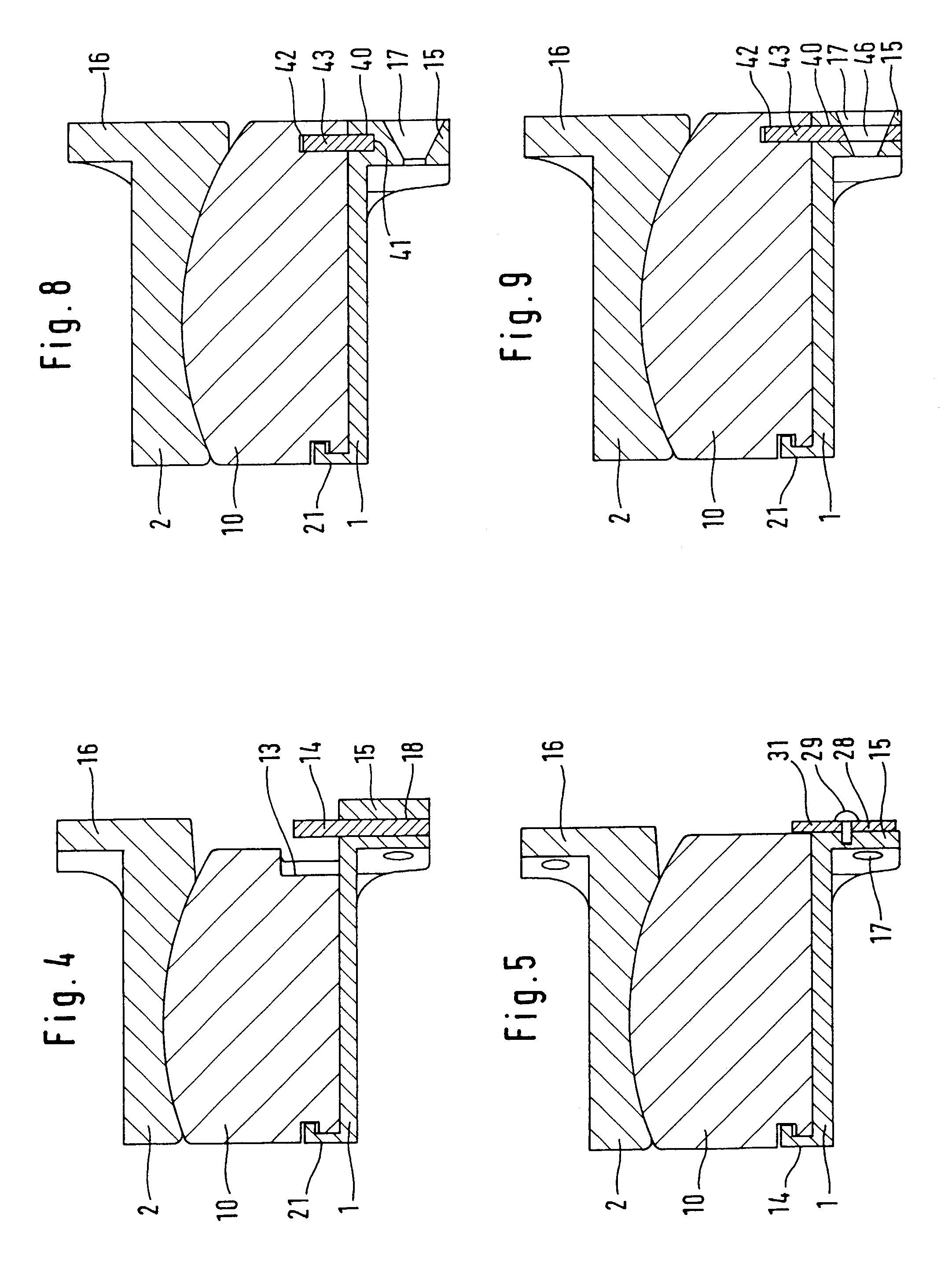Intervertebral prosthesis
a technology for intervertebral prosthesis and prosthesis core, which is applied in the field of intervertebral prosthesis, can solve the problems of difficult operation for operating surgeon to insert the prosthesis core into the seat, the prosthesis core cannot be inserted between the cover plates, and the interlocking is in principle unsafe, so as to avoid complications. the effect of operation
- Summary
- Abstract
- Description
- Claims
- Application Information
AI Technical Summary
Benefits of technology
Problems solved by technology
Method used
Image
Examples
first embodiment
[0029]The lower cover plate 1 and the upper cover plate 2 of the first embodiment have outer surfaces 3 and 4, respectively, which are intended for anchoring to the associated vertebral body. They are preferably plane. However, other substantially flat configurations including suitable surface structures for better anchoring to the bone are also conceivable. The cover plates are preferably made of metal.
[0030]The lower cover plate 1 has a plane bottom surface 5 facing toward the upper cover plate 2 and enclosed on three sides by a collar 6 which, above an inner undercut, forms an inwardly projecting ridge 7. The lower cover plate 1 is of oval or approximately rectangular shape in plan view.
[0031]The bottom surface 5 and the collar 6 of the lower cover plate 1 form a seat for the prosthesis core 10, which is made of a material with good sliding properties, for example polyethylene. It has a plane lower surface which matches the bottom surface 5 and which is delimited laterally and do...
third embodiment
[0042]For the third embodiment according to FIGS. 8 through 12, the above description of FIGS. 1 through 3 also applies, except for the ventral limit-stop device.
[0043]A slot 40, cut-in along the ventral edge of the lower cover plate 1, extends fully from top to bottom in the left half of the flange 15 in FIG. 10 and, in the right part of the flange 15, is delimited by the broken line 41 shown in FIG. 10. Opposite the slot 40, a slot 42 is cut into the underside of the prosthesis core 10 and lies flush with the slot 40. The two slots 40, 42 serve to receive a limit-stop plate 43 whose contour approximately matches the limits of the space which is intended to receive it and which is formed by the slots 40, 42. As FIG. 10 shows, it can be pushed into the slots 40, 42 from the side after the prosthesis core 10 has been inserted.
[0044]The limit-stop plate 43 can be provided at the end with a lug 44 which, after complete insertion of the limit-stop plate 43 into the slots 40, 42, protrud...
PUM
 Login to View More
Login to View More Abstract
Description
Claims
Application Information
 Login to View More
Login to View More - R&D
- Intellectual Property
- Life Sciences
- Materials
- Tech Scout
- Unparalleled Data Quality
- Higher Quality Content
- 60% Fewer Hallucinations
Browse by: Latest US Patents, China's latest patents, Technical Efficacy Thesaurus, Application Domain, Technology Topic, Popular Technical Reports.
© 2025 PatSnap. All rights reserved.Legal|Privacy policy|Modern Slavery Act Transparency Statement|Sitemap|About US| Contact US: help@patsnap.com



